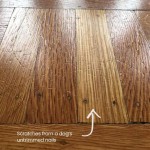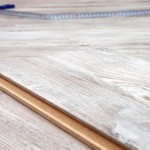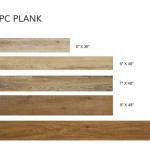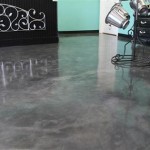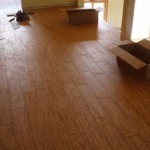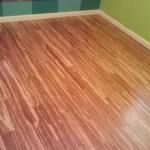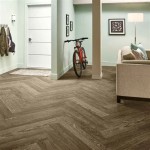Gluing Solid Wood Flooring To Concrete Floor
Solid wood flooring is a timeless and beautiful choice for homeowners who desire a natural, elegant look. However, installing solid wood flooring on a concrete subfloor presents unique challenges. Unlike engineered wood flooring, which can be glued directly to concrete, solid wood flooring requires a more intricate approach. This article explores the process of gluing solid wood flooring to a concrete floor, highlighting the key considerations and techniques involved.
Preparing the Concrete Subfloor: A Crucial Foundation
The success of gluing solid wood flooring to concrete hinges on proper subfloor preparation. A smooth, level, and dry surface is paramount for a successful installation. Here's a breakdown of the essential steps:
- Clean the Concrete: Remove any dirt, dust, debris, grease, or coatings that could hinder adhesion. A thorough cleaning with a specialized concrete cleaner is recommended.
- Repair Cracks and Imperfections: Fill any cracks, holes, or other imperfections with a concrete patching compound. Allow the patching compound to cure completely before proceeding.
- Level the Floor: If the concrete floor is uneven, leveling is essential to ensure a stable and even surface for the wood flooring. Self-leveling concrete or thinset mortar can be used for this purpose. Leveling compound should be applied according to manufacturer instructions.
- Moisture Barrier: A moisture barrier is crucial to protect the wood flooring from moisture emanating from the concrete subfloor. A vapor barrier membrane, such as polyethylene sheeting, should be laid over the leveled concrete. The membrane should overlap seams by at least 6 inches.
Ensure that the concrete subfloor is completely dry before proceeding with the installation. Moisture readings should be within acceptable limits according to industry standards.
Choosing the Right Adhesive for a Strong Bond
Selecting the appropriate adhesive for gluing solid wood flooring to concrete is critical for a durable and long-lasting installation. Consider these factors when choosing an adhesive:
- Type of Adhesive: There are several types of adhesives suitable for this application, including polyurethane, epoxy, and moisture-cure urethane. Each type has its pros and cons, so research and consultation with a flooring expert are recommended.
- Compatibility: Ensure the adhesive is compatible with both the wood flooring and the concrete subfloor. Check the manufacturer's specifications and recommendations.
- Open Time: Open time refers to the time you have to adjust the flooring planks after applying the adhesive. Consider your skill level and the complexity of the installation when choosing an adhesive with an appropriate open time.
- Drying Time: Adhesives have varying drying times. Be sure to consult the manufacturer's recommendations to determine the appropriate waiting period before applying additional flooring planks.
Proper application of the adhesive is equally important. Spread the adhesive evenly across the concrete subfloor using a notched trowel. The notches create grooves for the adhesive, allowing it to properly bond to the wood flooring.
Installing the Flooring: Precision and Patience
Once the subfloor is prepared and the adhesive is applied, you can begin installing the flooring planks. This process requires care and precision. Follow these steps for a successful installation:
- Start at a Corner: Begin installing the flooring planks in a corner of the room. Place the first plank against the wall, leaving a small expansion gap for movement.
- Stagger Joints: Avoid aligning the joints of consecutive planks. Stagger them, just like brickwork, to create a stronger and more visually appealing pattern.
- Secure the Planks: Apply even pressure to the planks to ensure a strong bond with the adhesive. Use a tapping block and a rubber mallet to gently tap the planks into place. Be careful not to damage the flooring boards during this process.
- Expansion Gaps: Maintain expansion gaps around the perimeter of the room and between the flooring and any fixed objects like walls or cabinets. These gaps allow for wood movement due to temperature and humidity changes.
- Curing Time: Allow the adhesive to cure completely as per manufacturer instructions. Avoid foot traffic on the freshly installed flooring during the curing period.
Gluing solid wood flooring to concrete is a complex process that requires careful planning, preparation, and execution. By following these guidelines, you can achieve a beautiful and durable installation. However, consider consulting with a professional flooring installer for intricate projects or if you lack experience in this type of installation.

How To Install Tongue Groove Hardwood Floors Over Concrete

How To Install A Glue Down Floor Diy Flooring

Fitting Hardwood Floor To Concrete Wood And Beyond Blog

Glue Wood Flooring To A Concrete Slab Fine Homebuilding

Hardwood Over Concrete Auten Wideplank Flooring

Can You Glue Hardwood Flooring To Concrete

Can You Glue Down Solid Wood Flooring Hardwood Guide Reallyfloors America S Est

Glue Wood Flooring To A Concrete Slab Fine Homebuilding

Gluedown 7 2 16 Hb

Gluing Down Prefinished Solid Hardwood Floors Directly Over A Concrete
Related Posts

